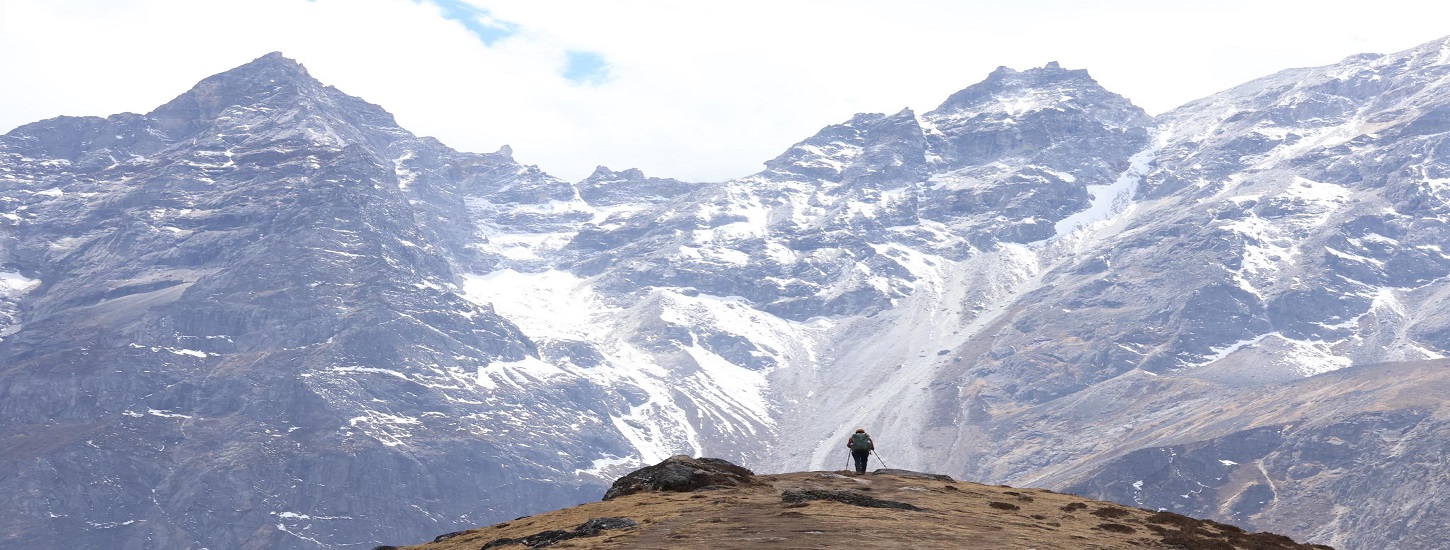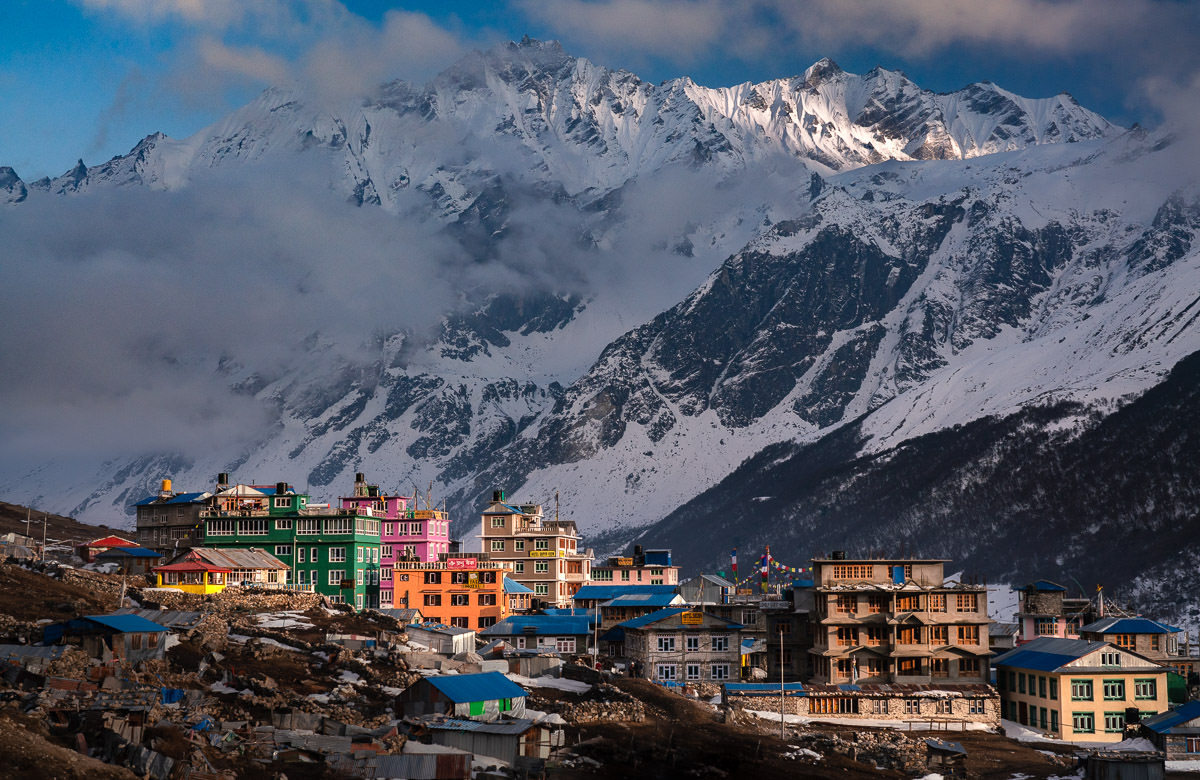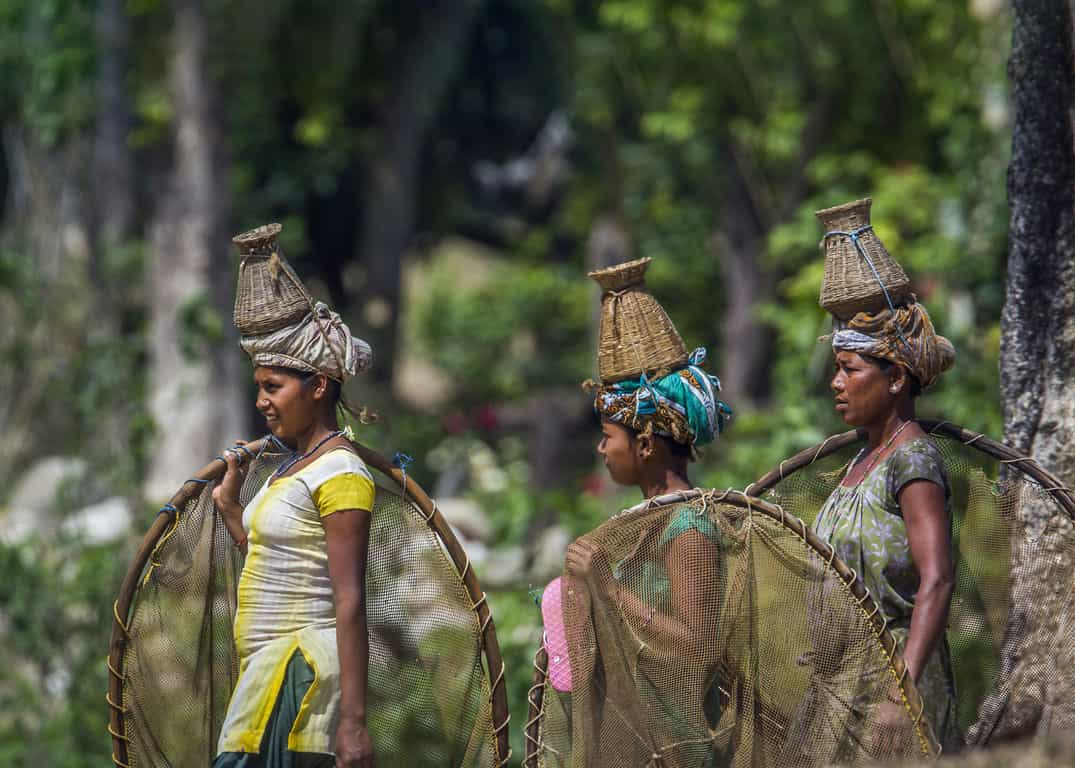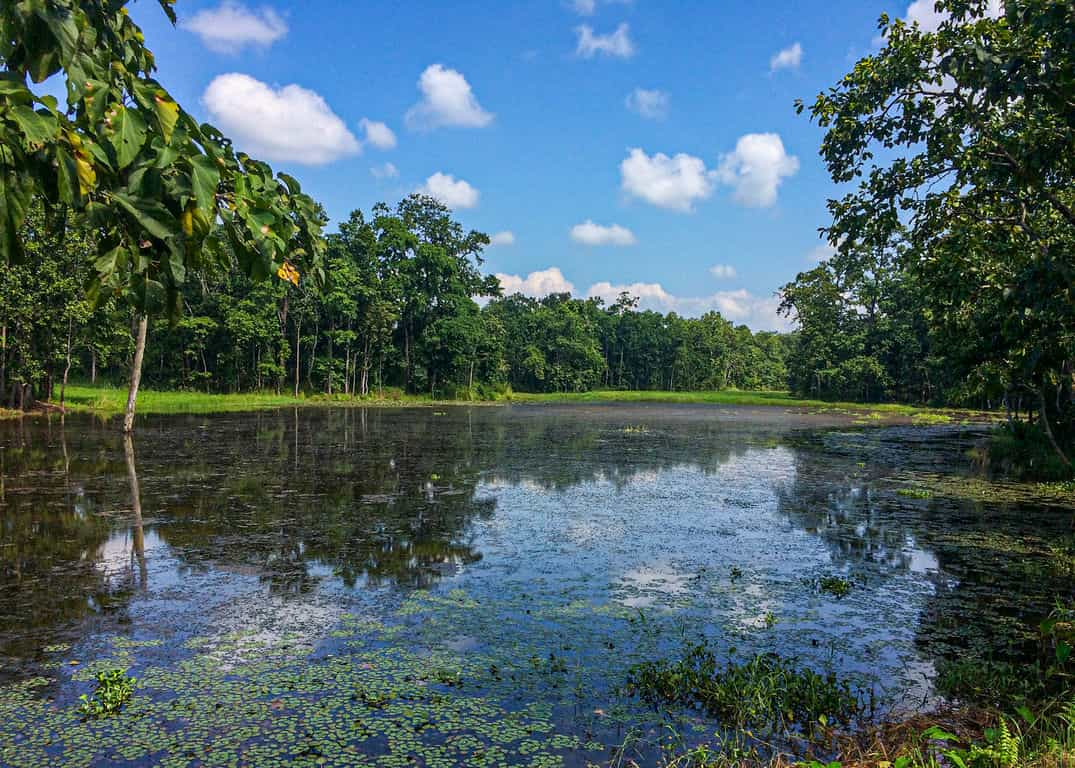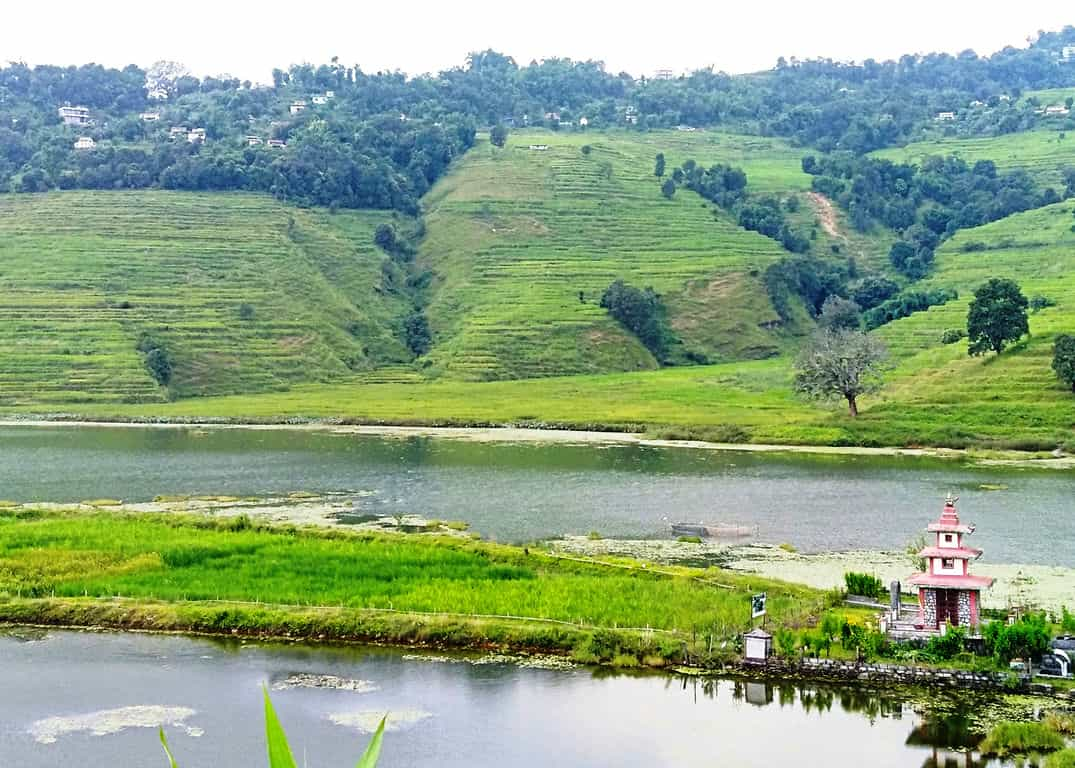Mount Everest is the tallest mountain in the world, standing at 8,848.86 meters (29,031.69 feet) above sea level. If you’re wondering where Mount Everest is located, it lies on the border between Nepal and Tibet, right in the heart of the Himalayas. With its massive size and snow-covered peaks, it’s one of Earth’s most stunning natural sights.
Locally, it’s known as Sagarmatha in Nepali and Chomolungma in Tibetan. Everest holds deep spiritual and cultural meaning for those who live near the mountain. Its extreme height, freezing temperatures, and icy terrain have made it a symbol of adventure and one of the toughest challenges for climbers around the world.
Where is Mount Everest Located?
Mount Everest is in the Himalayas, right on the border between Nepal and the Tibet region of China. It is part of the Mahalangur range, a big mountain area where large parts of the Earth’s surface meet, and many of the world’s tallest mountains are there. The Mountain is in the Solu-Khumbu region of Nepal to the south and Tibet (China) to the north, making it an important landmark for both countries.
Mount Everest is located at about 27.9881° North latitude and 86.9250° East longitude, which puts it at a key point along the border of Nepal and Tibet. Because it is in this high-mountain area, Everest has become a popular place for climbers and is very important in nature and culture for both Nepal and China.

Is Mount Everest in Nepal or China?
Mount Everest is located on the border between Nepal and China. The top of the mountain sits right on the line between the two countries—Nepal is on the south side, and Tibet (an area of China) is on the north. Because of this, the Mount Everest location is shared, but most climbers start from the Nepal side, which is the more popular route. Others choose the northern route from Tibet.
Mount Everest on the World Map.
Mount Everest is in Asia, in a mountain range called the Himalayas. It sits right on the border between Nepal and Tibet, which is a region of China. If you’re wondering where Mount Everest is located, just look for Nepal to the south and Tibet to the north of the Himalayas. The mountain stands right between them and is one of the most famous places in the world.
Facts about Mount Everest’s Height and Surrounding Peaks
Mount Everest, the tallest mountain in the world, is 8,848.86 meters (29,031.7 feet) above sea level. This height was confirmed by a joint survey between Nepal and China in 2020, making it the most accurate measurement.
Some interesting facts about Mount Everest
- Standing at 8,848.86 meters (29,031.7 feet), Mount Everest is the highest peak on Earth.
- It is located on the border between Nepal and China’s Tibet Autonomous Region.
- Everest’s height is increasing yearly due to the ongoing collision of the Indian and Eurasian tectonic plates.
- The region above 8,000 meters is known as the “Death Zone” due to the thin air, where humans cannot survive without supplemental oxygen.
- Sir Edmund Hillary and Tenzing Norgay made the first successful summit on May 29, 1953.
- Extreme temperatures on Everest can drop to as low as -60°C (-76°F), posing significant challenges for climbers.
- The Khumbu Icefall is one of the most perilous sections of the climb, with massive glaciers and deep crevasses.
How Tall is Mount Everest? A Scale Comparison
Mount Everest is the tallest mountain in the world, standing at 8,848.86 meters (29,031.7 feet) above sea level. It’s located in the Himalayas, right on the border between Nepal and Tibet, which is a region of China. When people talk about the location of Mount Everest, they often compare its height to other famous mountains to understand just how big it is.
1. Mount K2
- Height: 8,611 meters (28,251 feet)
- K2 is the second-highest mountain on Earth, but it’s still 237 meters (778 feet) shorter than Everest. Even though it’s a bit lower, K2 is considered one of the toughest mountains to climb because of its dangerous conditions.
2. Mount Kangchenjunga
- Height: 8,586 meters (28,169 feet)
- Kangchenjunga is the third-highest mountain, 610 meters (2,000 feet) shorter than Everest. It’s known for its beauty and difficulty, and it is located between Nepal and India.
3. Burj Khalifa
- Height: Mount Everest: 8,849 meters (29,032 feet)Burj Khalifa: 828 meters (2,717 feet)
- Mount Everest is over 10 times taller than the Burj Khalifa, making it the tallest natural peak compared to the tallest man-made structure.
4. Eiffel Tower
- Height: Mount Everest: 8,849 meters (29,032 feet)Eiffel Tower: 330 meters (1,083 feet)
- Mount Everest is 26 times taller than the Eiffel Tower, making the mountain much bigger than the famous tower in Paris.

Mount Everest and Its Majestic Neighbors
The peaks around Mount Everest are some of the tallest and toughest to climb. Lhotse, the fourth-highest peak, and Nuptse, known for its sharp ridges, are both close to Everest. These peaks, part of the Everest region, offer climbers exciting and difficult challenges.
1. Lhotse
Lhotse Mountain, which sits just south of Everest, reaches 8,516 meters (27,940 feet). It is the fourth-highest mountain in the world, known for its steep, difficult terrain and proximity to Everest.
2. Nuptse
Nuptse is another mountain surrounded by Everest. Located southwest of Everest, it has an altitude of 7,861 meters or 25,790 feet. Though Nuptse’s height is not comparable to that of Everest and Lhotse, it is likewise a popular peak in the Everest massif because of its sharp ridge and technical aspects encountered during climbing.
How to Get to Mount Everest?
There are two main ways to reach Mount Everest, each offering a unique experience. Understanding where Mount Everest is located helps explain these options. The mountain sits on the border between Nepal and Tibet, a region of China. Because of this, travelers can choose to approach it either from the south side through Nepal or from the north side through Tibet. These are the two most common routes used by trekkers and climbers.

1. South Face (Sagarmatha)
Climbing Mount Everest usually starts from the south side of Nepal. First, you fly to Lukla (2,860 meters / 9,383 feet), then trek to Everest Base Camp (5,364 meters / 17,598 feet). From there, you climb through several camps, including the South Col at 7,906 meters (25,938 feet), before reaching the summit at 8,848.86 meters (29,031.7 feet).
The route is well-prepared with lots of support, like sherpas and all the gear you need. After reaching the top, you’ll head down to Base Camp to finish the climb. It’s a tough journey, but the feeling of standing on top of the world makes it all worth it.
2. North Face (Qomolangma)
Climbing Mount Everest from the north in Tibet is a tough but amazing challenge. Climbers usually drive to the Tibetan Everest Base Camp at 5,150 meters (16,896 feet), where the real climb begins. The route to the summit, which is 8,848.86 meters (29,031.7 feet) high, involves steep rock, ice, and a difficult rock wall at high altitudes. This route is quieter and less crowded than the one from Nepal, giving climbers a more peaceful and solitary experience.
Are you ready to explore the Everest adventure?
The Everest Base Camp trek offers an unforgettable adventure through stunning landscapes, rich Sherpa culture, and breathtaking views of the world’s highest peaks.
The History of Mount Everest Expeditions.
Mount Everest has a long history of feats and failures. In 1953, Sir Edmund Hillary and Tenzing Norgay were the first climbers to reach the summit. Thereafter, the records have continually been broken, for instance, it was summited without oxygen in 1978 and climbed solo in 1980. It has witnessed tragic events as well, such as the devastating storm of 1996.
| Year | Event/Expedition | Details |
| 1921 | First Reconnaissance | Led by Howard-Bury; no summit attempt. |
| 1922 | Second British Expedition | Set a new personal and near-record achievement. |
| 1953 | First Successful Summit | Hillary & Norgay summited via South Col. |
| 1960 | First North Face Ascent | The Chinese team reached the summit from the Tibet side. |
| 1975 | First Woman to Summit | Junko Tabei (Japan) reached the summit. |
| 1996 | Everest Tragedy | The storm killed 8 climbers; raised safety concerns. |
| 2008 | No-Oxygen Ascent | Messner summited without supplemental oxygen. |
| 2011 | Apa Sherpa’s Record | The storm killed 8 climbers; raised safety concerns. |
| 2019 | 14 Peaks in 6 Months | Nirmal Purja climbed all 8,000m peaks, including. Everest. |
| 2022 | Record Summit Attempts | 21st summit, most of the time. |
| 2023 | Pasang Dawa Sherpa’s 27th Summit | Overcrowding was noted despite many successful climbs. |
| 2024 | Kami Rita Sherpa’s 30th Summit | Most Everest summits by any individual. |
How many days does it take to climb Mount Everest?
Climbing Mount Everest from the Nepal side begins with a 7-10 day trek from Lukla to Base Camp, where climbers walk through villages and stunning mountain views. Once at Base Camp, they spend about 4-6 weeks getting their bodies used to the high altitude by going up and returning to rest.
When they’re ready, climbers make a 4-5 day push to the summit, battling the tough conditions along the way. After reaching the top, they head back down to Base Camp in about 2-3 days. The trip takes around two months(60-70 days), testing climbers’ strength and patience every step.

Conclusion
In conclusion, trekking to Base Camp or climbing Mount Everest is a big challenge that takes careful planning and preparation. Everest attracts adventurers from all over the world with its stunning views and various climbing routes. Knowing where Mount Everest is located, along with important facts and route options, can make a big difference in how well you prepare for this once-in-a-lifetime journey.
Trekking to Everest Base Camp or climbing to the summit is a once-in-a-lifetime adventure. You’ll see stunning mountain views, experience local Sherpa culture, and feel a huge sense of achievement. With our experienced guides, safe and well-planned trips, and years of expertise in high-altitude trekking, we make your journey smooth and unforgettable. Start planning your Everest adventure today—Contact us now to make your dream come true with a trusted and professional team.







